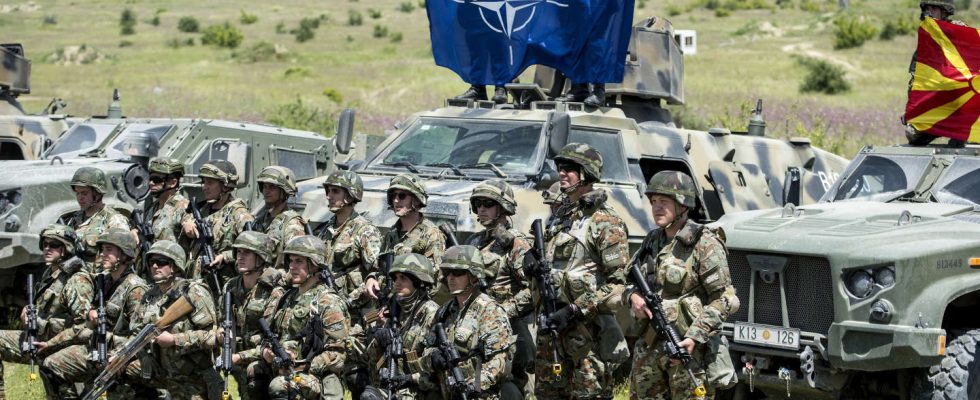More than a year after the start of the war in Ukraine, and despite the massive shipment of military equipment to Kiev since February 2022, NATO allies are still struggling with a thorny issue: the coordination of their efforts. , in the longer term, on the eastern flank of Europe, particularly in the land domain. As the annual summit of the Atlantic Alliance is to be held on July 11 and 12 in Vilnius, the question of NATO’s military plans should be one of the main topics of discussion.
A year ago, at the Madrid summit, NATO Secretary General Jens Stoltenberg pressed for the announcement of the objective of providing the Alliance with a rapid reaction force of at least 300,000 well-trained men, against 40,000 soldiers whose preparation had hitherto been haphazard. The idea was to bring the Europeans to be able to provide at least half the manpower necessary for their defense, if the United States were occupied in the Indo-Pacific against China. But, a year later, the realization of this ambition still seems very uncertain.
Even if the allies should do everything, in Vilnius, to deceive“changes so far have been modest”, summarizes an in-depth study by the International Institute for Strategic Studies (IISS) published at the end of June. According to the IISS, the new “power model” of NATO, drawn up in recent months, comprises a first echelon of 100,000 soldiers, likely to be deployed in ten days, a second echelon of 200,000 men, who can be mobilized in a month, and a last echelon of 500,000 soldiers who should be ready within six months. “But the crucial question is whether the allies are serious this time, unlike after 2014”, after the annexation of Crimea by Russia, points out the IISS.
Brake in some staffs
More than 30,000 soldiers are now prepositioned on the eastern flank. In addition to these ground forces, there are all the planes and ships deployed under the command of the Alliance. These troops are mainly integrated with the battalions created in 2014 in the Baltic countries and in Poland, then with those which were added in 2022 in Bulgaria, Romania, Hungary and Slovakia. But the move up a gear, in terms of staff, is blocking a number of staffs.
France, for example, has a battalion of a thousand soldiers in Romania, equipped in particular with a dozen Leclerc tanks. Among these men, a small third is intended for the operation of the Mamba air defense system, on the shores of the Black Sea. NATO would like these numbers to be increased to brigade level (approximately 4,000 men). But, for the moment, France has only deployed a brigade headquarters of about ten people on the spot.
You have 57.54% of this article left to read. The following is for subscribers only.

